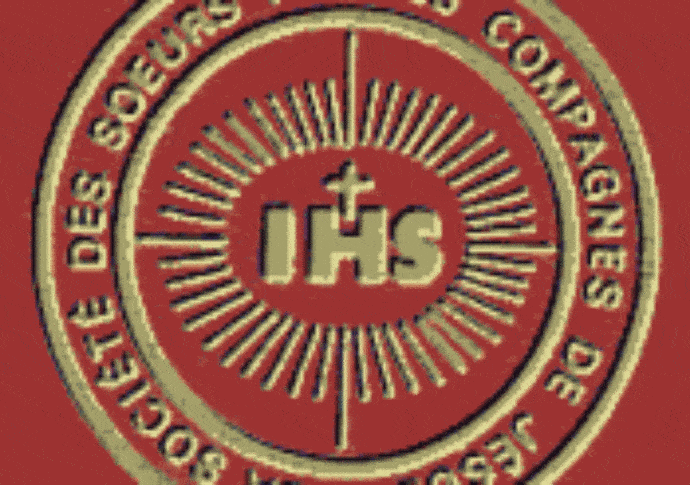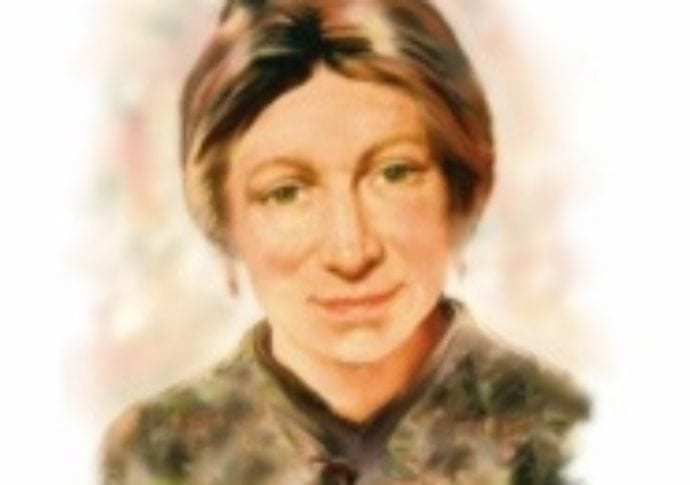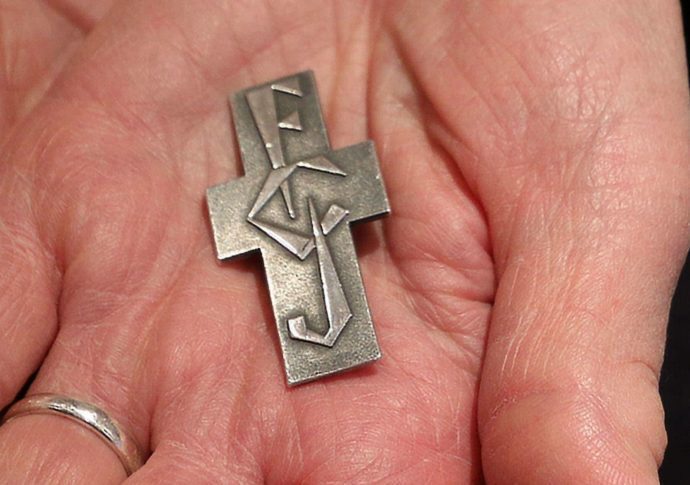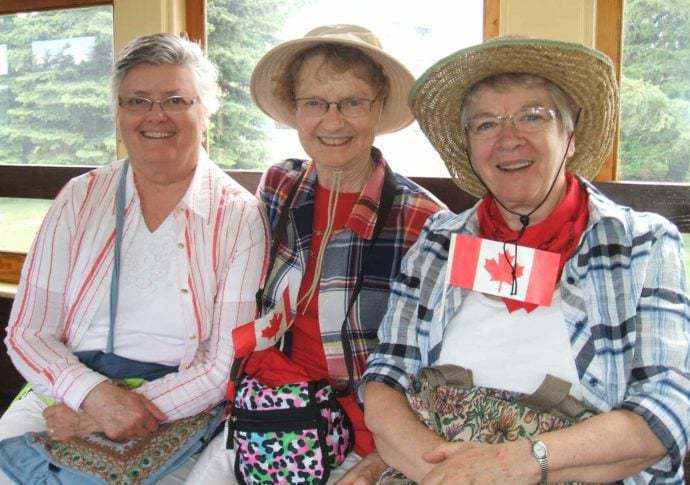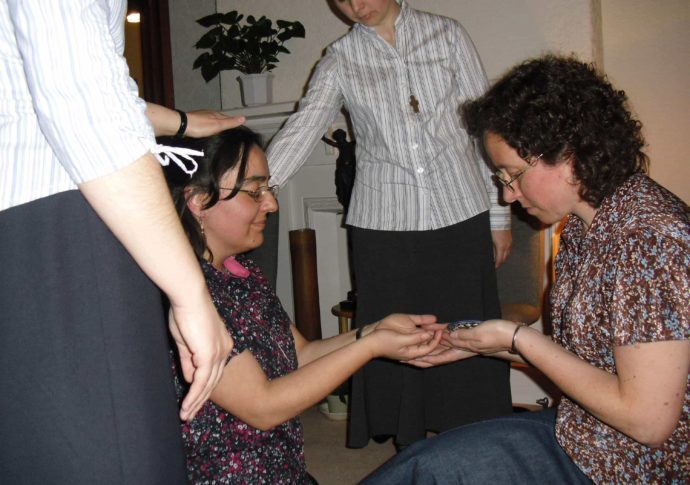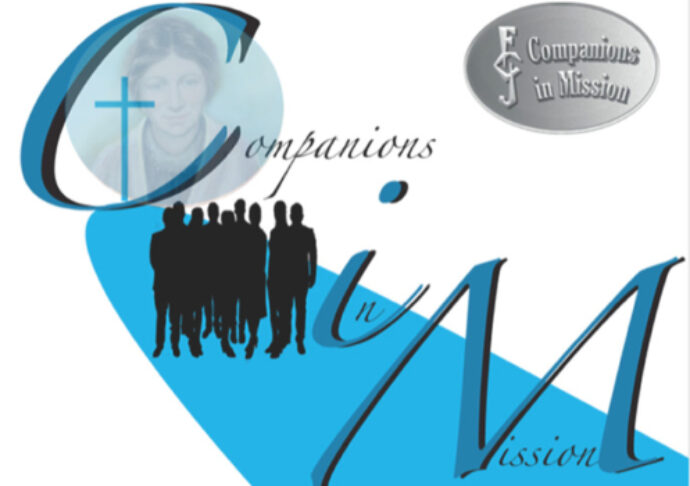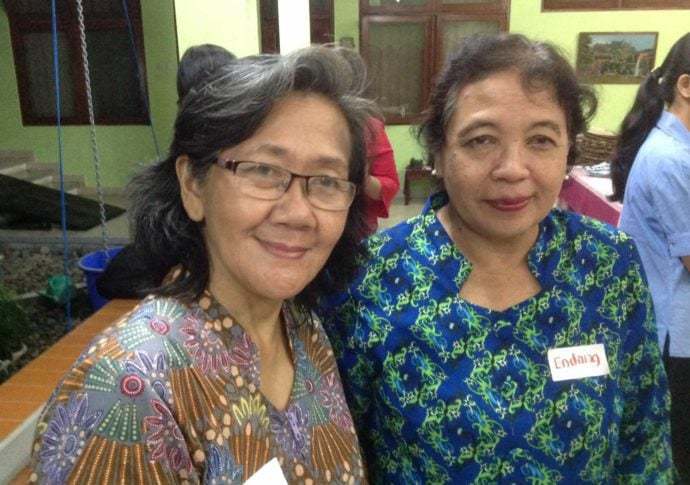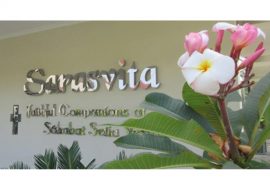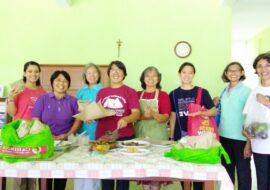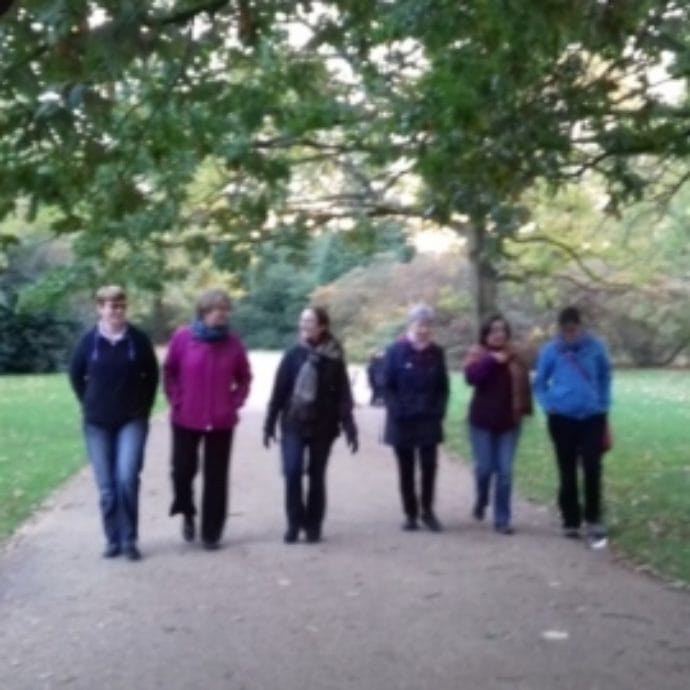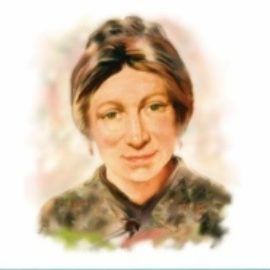Almost twenty-five years later, Sisters Margaret and Judith, fcJ were able to return to Sierra Leone. Here they recount their experience.
The first four FCJ sisters arrived in Sierra Leone, West Africa, in 1979, and began life and ministry in Kailahun in the south east of the country. Later a new community was established in Moriba Town in the south west, and also in Kenema in between the two. In 1991, when rebel activity began in neighbouring Liberia, the rebels soon crossed into Sierra Leone and it was the east of the country that first came under attack. Consequently our sisters were in Kailahun when it was invaded by rebels in April 1991 and they had to flee across the border to Guinea. For the following four years, fcJ sisters were still able to function in Kenema, which was southwest of Kailahun, and in Moriba Town in the south. On March 12th 1994, a hospital near Kenema was attacked, and the parish priest, the doctor, his wife and his child were killed. Because of this tragedy, the Bishop ordered all foreigners (religious and seminarians) to leave Kenema and they were escorted through a rebel held area by Nigerian soldiers, to ‘safety’. Our fcJ community in Moriba Town still felt safe as it was close to two international rutile and bauxite mines which had their own security, but on January 19th 1995, the firing of guns and rockets was heard nearby so it was clear that the rebels had finally reached there as well. Consequently, we were forced to flee from our third and final community house in Sierra Leone.
Almost twenty-five years later, two of the fcJ sisters who had left in 1995, sisters Margaret and Judith, returned to Sierra Leone. On arrival in Freetown airport we saw improvements in the facilities and in the careful immigration formalities. The greetings and little kindnesses we received at the airport soon made us feel at ease and welcome. One of the St. Joseph of Cluny sisters had organised the ferry ride for us, and so we were gently led through the night darkness onto a wooden pier where we were helped on to a small speed boat which zoomed us to Freetown in about twenty minutes. As we drew near the wharf we could see this kind Cluny sister waiting for us, to take us to one of their convents which offers hostel accommodation.
Before coming to Sierra Leone we had found online Sierra Leone Car Hire which is a UK charity whose profits go to St Georges Foundation for street children in Freetown, so we booked this to take us on all our journeys. It was a relief to see a car and a driver waiting for us on the first morning. The streets of Freetown in daylight were much more crowded than we remembered and our driver told us that people who had escaped to Freetown during the war did not return to their villages afterwards, hence the crowds. Traders’ wares covered every spare space and there were many more cars and Chinese tricycles called keke. Cars parked diagonally on both sides of the road made the already narrow roads even narrower. Open drains and broken pavements haven’t improved so you have to keep your wits about you as you walk.
Our first appointment was with the Archbishop whom we had known as a newly ordained priest in Kenema. As we greeted him he commented on how his life had changed since we last met, and we enjoyed sharing memories and hearing stories of life in recent years. After this visit we attended Ash Wednesday Mass in the cathedral and the Archbishop introduced us to the congregation, so that after Mass, a man from Kailahun who had taught with us, came to greet us!

Over the years, since leaving Sierra Leone in 1995, those of us who have lived there have kept in contact with ‘the three boys’ who had lived with us in Kailahun and Moriba Town, and whose education the Society had supported. We asked them to stand in the same positions as when we had taken the first photo in 1993! Jeremiah was the first to visit us and he took us to meet Bockarie in his medical clinic. While we were in Freetown we wanted to visit a dear friend from Kailahun who had been the Principal of the primary school and a stalwart of the parish. She had fled to Freetown during the war and had not returned to Kailahun. Bockarie had stayed with her to finish his schooling after we had left in 1995 and Bockarie and Jeremiah now took us to see her.
It was soon time to drive to Kenema where we would be based for the next eleven days. The first part of the road was very different as it is now a very good Chinese built road with three electronic tolls with cameras and uniformed personnel! It is only about a third finished but it will have two lanes each way when it is completed. The rest of the road was narrow but tarred all the way so the five hour journey, though long, was pleasant enough.
Arriving at the Kenema Pastoral Centre we were warmly welcomed by Mariama Kamara. Mariama was one of our students in Kailahun and came to Kenema to work in the Pastoral Centre while we were still working there. While she prepared some food we wandered around taking photos. The centre was looking quite dilapidated and obviously a lot of money will have to be spent if it is ever going to welcome international groups again. Mariama and the staff were preparing for a large group of agriculturalists who would use the premises for a two weeks’ workshop, but she said that there are months when nothing happens, and the centre itself hasn’t been providing any courses, so their jobs are precarious. The Bishop’s Office and other Diocesan offices have recently moved up to the Pastoral Centre, so hopefully there will be future developments and improvements. We visited the newly installed Bishop of Kenema who recalled being taught by our sisters when he was a seminarian.

We had planned to stay at the Centre, but because of the workshop that wasn’t possible. Instead Fr. Joseph Momoh and Mariama had arranged for us to stay in a house in a village outside Kenema to which Mariama took us. We went into a family compound with little children and families all around us, and the house itself was well prepared with big containers for water, and solar panels which provided some light. Kenema Town itself has hydro-electricity in the rainy season – but nothing much in the hot, dry season which it was, when we happened to be there!
Our first trip out of Kenema was to Fr. Joseph Momoh’s parish in Gerihun, about half an hour away on a good road. Joseph took us to the two primary schools where we went into each classroom to greet the children. We also met the teachers of the secondary school. Joseph then took us on very rocky roads to two outstations where we were welcomed with speeches by the community leaders, proudly showing us their almost finished churches. They were very happy to have visitors showing interest and they had run from their farms when they heard we had arrived. Much gratitude was expressed to Joseph for all the hard work he has been doing in building up the communities.

March 12th was the twenty-fifth anniversary of the death of Fr. Felim MacAllister CSSp, and the Dutch family of Dr. Eelco Krijn, who had all been killed by rebels as they left Panguma Hospital. The parish priest had arranged to celebrate Mass on this anniversary and the church was packed with parishioners, hospital staff and school students. The pain of these killings still seemed very present in the people and it was difficult not to be moved – especially when the priest, during Mass, talked about losing their pastor and their doctor. He spoke of the sacrifice that they had made in choosing not to leave their patients sooner – in fact returning again after they had initially gone to Kenema, since they were motivated by their desire to care for others. After Mass we went to Felim’s grave behind the church and prayed there.

We were also shown the alcove to the memory of the Krijn-van Goudoever family. This contains photos of them all and some soil from where Eelco, Karyn and Zita were finally buried in Holland. The hospital staff told us that they had held a vigil of prayer in the hospital the previous night.
In the hospital we were shown the children’s ward which was supported by a donation from the Mac Allister family. The hospital manager who was working with the sisters at the time of the attack, said that the killing of Felim was such a big event for the rebels that it distracted the ‘killers’ – which meant that the local people had the opportunity to escape, and she was among them. The many burnt-out buildings in the town must constantly remind the people of these events.
Travelling to Kailahun was a lot easier than in the past as the road is now tarred for three quarters of the journey. Also, inside Kailahun town itself, there are were some bits of road around the town with tarmac, especially those leading out to where the International Ebola camp is situated just outside of the town. Our old convent had been occupied by the rebels and then burnt, but after the war the Bishop arranged for it to be renovated. There are now Clarissan sisters living there and they had given us the key to go inside as they were out of town. A big wall now surrounds the convent and they have built a girls’ school and boarding house for about 24 students on the land closer to the road. It is heartening to know that the young girls of Kailahun are being looked after.

In the town we met Kumba, the lady who used to cook for us. She was very emotional and she told us that her husband John had died, and so had the husband of her eldest daughter. They are a household of females now. We visited Moses the catechist with whom many of us had worked in various village outstations. In recent years he has been very ill, but is still doing some catechetical work. It was a joy to meet their families and hear some of their stories.
The parish priest took us to the National Secondary School where he is the manager and where he teaches, and where many of us taught at some time. The school now has a big wall around it with a gate to get in. The new President of Sierra Leone has stated that education is a right for all and so all children have to attend school which is now ‘free’ – so the wall is needed to keep them in! The priest told us that some of the students keep on destroying the back wall to escape into the bush as they don’t want to be in school.

In the grounds of the Kailahun parish church is a new Pre-school, and on the day we visited the children and staff were wearing the T-shirts of their four houses which are all named after significant people who had been in the parish. We were so happy to see that the yellow T-shirts were for Mighty Fr Felim MacAllister House and the red ones were for Mighty Sr Agness House.
The next day we set out for Moriba Town but the road was like a washing board with loose gravel, and little did we know that our fuel tank was pierced by a stone. It was only as we stopped at Serabu Hospital that someone we spoke to on the road noticed that there was a leak, and so we had to wait there for four hours while repairs were done. When the car was ready we were told that the road ahead would still be slow-going so we wouldn’t reach Moriba Town until quite late, and then it would be too late to return to Kenema, so we regretfully decided to turn back. We were aware that it was a real blessing that we had decided to call in to the hospital otherwise we could have been in the middle of nowhere when the fuel finally disappeared. In addition we were then able to find mechanics and a place where there was electricity from a generator for the welding. Luckily we had brought water and sandwiches with us!

On our way back to Freetown we called in to Bo to visit Bishop Charles Campbell. He was another of the young priests we had known and he was the person we had asked to write the letters of invitation which we needed to get our visas. While in Bo we also met the Superior General of the Spiritans who was visiting, and the Spiritan Provincial for Sierra Leone and Liberia.
On our final full day in Sierra Leone we met with the three ‘boys’ – Bockarie, Jeremiah and Joseph – in the house of Bockarie, as they wanted the opportunity to thank the FCJ Society for all the help and support they had received. Margaret acknowledged on our behalf, saying how thrilled we were to see the men they had become and especially that they are all helping others – as teacher, doctor and priest.
We are grateful that we have had this opportunity to return to Sierra Leone and to visit many people and places that we remember with love. Obviously we were sad to hear of the deaths of so many people that we knew, and there is obviously still great poverty and need in the country but there is also much hope for the future, especially with the new president admitting the importance of education for all.



